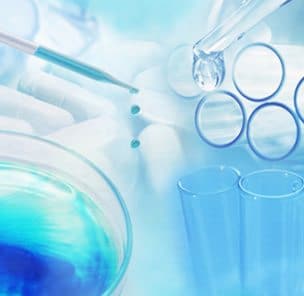What Is Menopause?


A Natural Transition Period
The term for the collapse of the female reproduction system is formed from the Greek words “meno” (month) and “pausis” (stop). Usually, the regular periods will not stop from one day to the next. Most women experience a transition.
One or several months without menstruation alternate with months with a menses. The periods vary in length and intensity. Under such changing conditions, when can a woman be sure that the time of her periods is over? Typically this is when a year has passed since her last spontaneous menstruation. This is exactly what menopause means. It is a point in time that can only be determined retroactively.
Definition of Menopause
From puberty until the occurrence of menopause, the pituitary gland releases stimulants (FSH or follicle-stimulating hormone and LH, i.e. luteinizing hormone) for the reproductive glands into the blood. The ovaries respond by producing sexual hormones. The increase of their level in the blood is a signal to the brain that its action has been successful. This feedback stabilizes the hormonal situation. Over the years the female body ceases to produce enough sexual hormones for this success report. The control center of the brain does not receive a stop signal.
As a consequence, stimulation of the reproductive glands is not terminated but even increased. The pituitary gland releases even more stimulants. The complicated system of impulse and response is materially disturbed. This hormone deficiency has dramatic consequences. The abrupt derailment, usually due to age, reinforces almost all other aging processes. Skin, vessels, bones, muscles and the brain are especially affected.
Menopause: A Period of Transition

Women: pre, peri or post?
Some women do not recognize the transition to menopause as long as they have an irregular cycle. Three phases blend into each other:
Premenopause:The phase before.
Perimenopause: (From the Greek term for “around.”) A stage of irregular menstruation that may stretch over several years and ends upon the occurrence of menopause.
Postmenopause: Starts after the last period. Women are recommended to regard themselves as being “in perimenopause” until the established diagnosis of “postmenopause.” Perimenopause may be characterized by as few as two consecutively missed periods or by up to 260 days without menstruation.
How the Body Experiences Menopause
Early consequences are known to include hot flashes, outbreaks of sweat, sleep disorders, changes in blood pressure, unrest, agitation and depressive moods.
In the following months and years it is inevitable that the degeneration of organs will cause symptoms to become imminent: bladder weakness, shrinking of the sexual organs and the skin followed by arthrosis, osteoporosis and arteriosclerosis.
Turning Point Between Age 44 and 52
The average age for the occurrence of menopause in the Western world is 51 years. The normal range extends mostly from age 44 to 52.
The most distinctive feature of this turning point is the change in the function of the ovaries. The woman becomes infertile.
Almost Half a Life
In this day and age, a woman usually lives long enough to be postmenopausal for almost half of her life. Therefore, the start into her “third fate” is of extremely great social and psychological importance. The organism responds in very different ways to the rapidly changing hormone levels. The number of possible effects is substantial. They differ hugely from woman to woman and even identical effects occur with greatly varying intensity.
The specific effects of low estrogen levels remain even after the so-called change of life is over.
These include dryness of the skin and the degeneration of some structures referred to as urogenital atrophy. Tissues in the genital area shrink and loose elasticity and moistness. Itching, skin hemorrhage, urinary disorders (caused by the instability of the vasomotor nerves), as well as an increased inclination to inflammation and infection are not uncommon.





